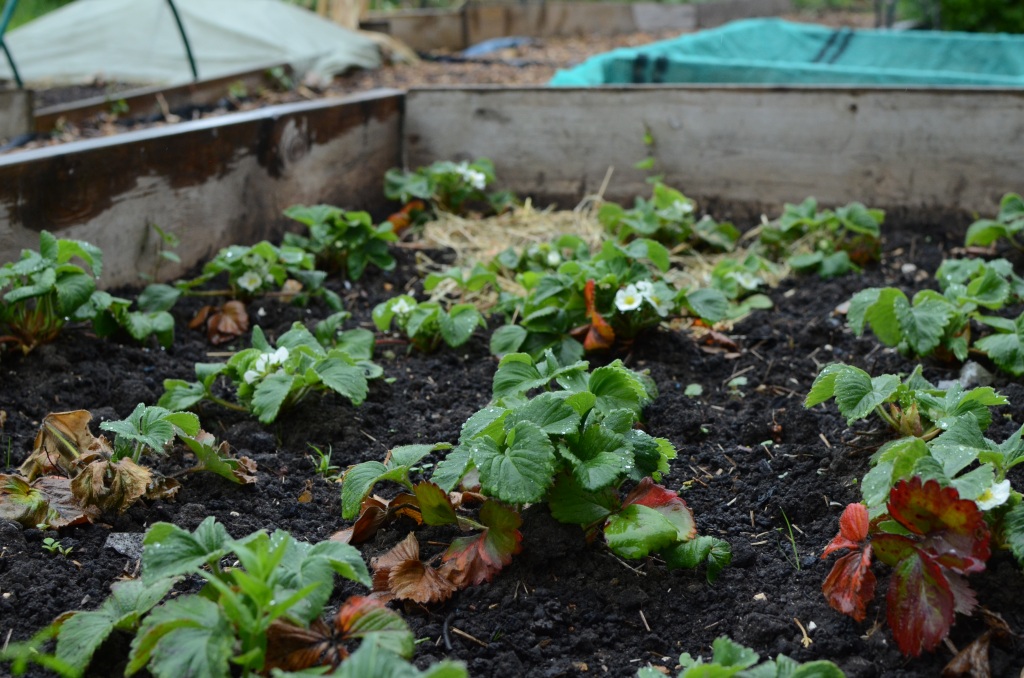
How does your garden grow?
Mine is certainly not with pretty leeks all in a row, though I made a good attempt at doing so during my first year on the allotment plot. When looking for advice and tips on how to grow your own food, many of the photographs you will be confronted with are of perfectly weeded raised beds and vegetables all growing in straight rows. Sometimes, these pictures would look so perfect to me that I would wonder how anybody actually dared to pick one of the cabbages for fear of utterly destroying the vision of perfection before them?
When I found myself standing before my own raised bed with a handful of seeds, I emulated what I had seen in these pictures without much thought. I ran my fingers through the fresh compost and lightly sprinkled seeds in neat little rows. As carrots, leeks and lettuce seedlings began to spring up, I would gently pinch out the ones growing too closely together, or out of line, or not strongly enough, and allow the rest to rise up in the comfort of their safely marked out territory. My plot began to look like all the others around me, with vegetables standing tall and linear, like soldiers marching in a parade.
As the season progressed, I grew sloppy. My rows became less defined and slightly more chaotic. My spring onions grew sporadically around the bed, popping up wherever they felt like. Carrot rows looked messy and slightly unhinged and my zinnia flowers fought hard for the light against one another, leaving a brown, crispy mess of discarded siblings in the middle.
Seeds fell from my hand like waves of confetti and the plot became a postcard of disorder and chaos. Plants flopped onto each other like drunks at a party. My clearly defined vegetable rows were no more and in their place, a sea of chaotic discomposure had risen. To put it simply, my plot was a bloody mess.
But, alive it was. Plants want to survive, it’s their one purpose in life. To grow, to live, to exist. So that is exactly what they did. They grew and they fought their siblings and they produced a pretty good harvest. However, though the plants did pretty well, I began to struggle.
Weeding between vegetable seedlings who just pop up wherever they like, isn’t easy. Especially when you aren’t experienced enough to know the difference between a Californian poppy seedling and a carrot head. Or what a potato stem looks like compared to a stinging nettle.
Let me tell you, even now 2 years on, most early seedlings look exactly the same to me. I was quickly beginning to understand the benefits of growing things in neat little rows. Without the knowledge required to be able to differentiate between a weed and a vegetable seedling, I was unable to maintain each bed to it’s full potential, leaving my plants fighting with not only each other, but enemy weedlings.
I started to notice a lot of slug and snail damage on my plants too, and though this wasn’t completely unusual, it was proving quite difficult to deter them with my seedlings being dotted about so much. I wasn’t able to simply sprinkle egg shells and wool pellets alongside each row, instead I had to protect each plant individually from attack. There is safety in numbers after all and it is always much easier to protect an entire row of plants from complete annihilation than 20 teeny tiny lonesome seedlings. (Though of course, not always completely possible either way.)
My sloppiness was beginning to come back to bite me in the butt and I was losing control of my plot a little bit. It made me very aware of the benefits of growing vegetables in neat little rows, which turned out to be far more than I had ever realised. Weeding is easier, weed differentiation is possible at an earlier stage and protection is a lot simpler. Not only that, but plants seem to work better when they have their own space to grow and are not having to fight their neighbours for room and nutrients. It was all making sense now.

I learn by doing, it’s how I am built. This was an excellent lesson to learn so early on, but I believe the reason it has stuck with me is because I have experienced the side effects first hand from not planting in rows.
As with anything, there were some benefits to this new way of sowing and a few things I have taken away from this experience. Firstly, slug and snail attacks happen in any garden, whether you grow in rows or not. However, I have started to wonder about the benefit of a few sacrificial crops. Perhaps sowing an extra row or a few scattered crops with little protection in order to tempt them to go for the easier meal would be a good experiment? It has also taught me that plants will still produce pretty good crops if not thinned out properly. Some people don’t even bother to thin out their plants at all, and this was an interesting idea to read about.
After all, row or no row, plants want to grow. They are born survivors, incredible at adapting to challenges and far better than us at determining what they need. Rows make our lives as gardeners easier, but plants don’t really care. And I think I respect them even more for their absolute, complete dispassion to the whole thing!


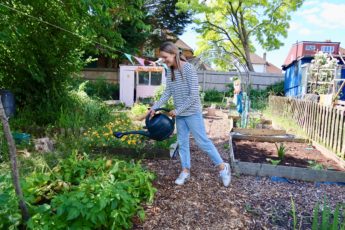
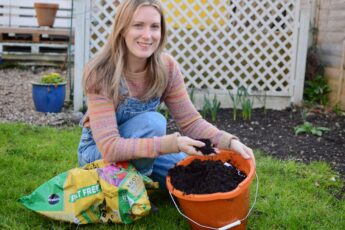
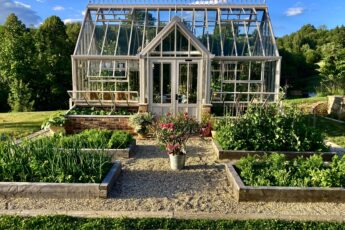
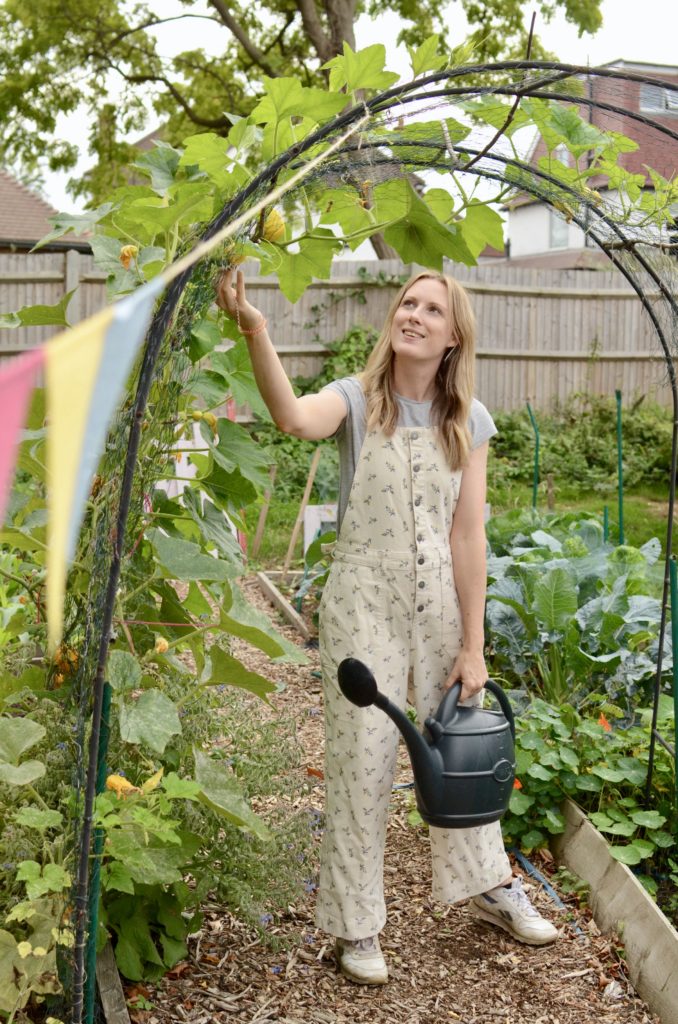
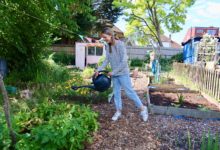
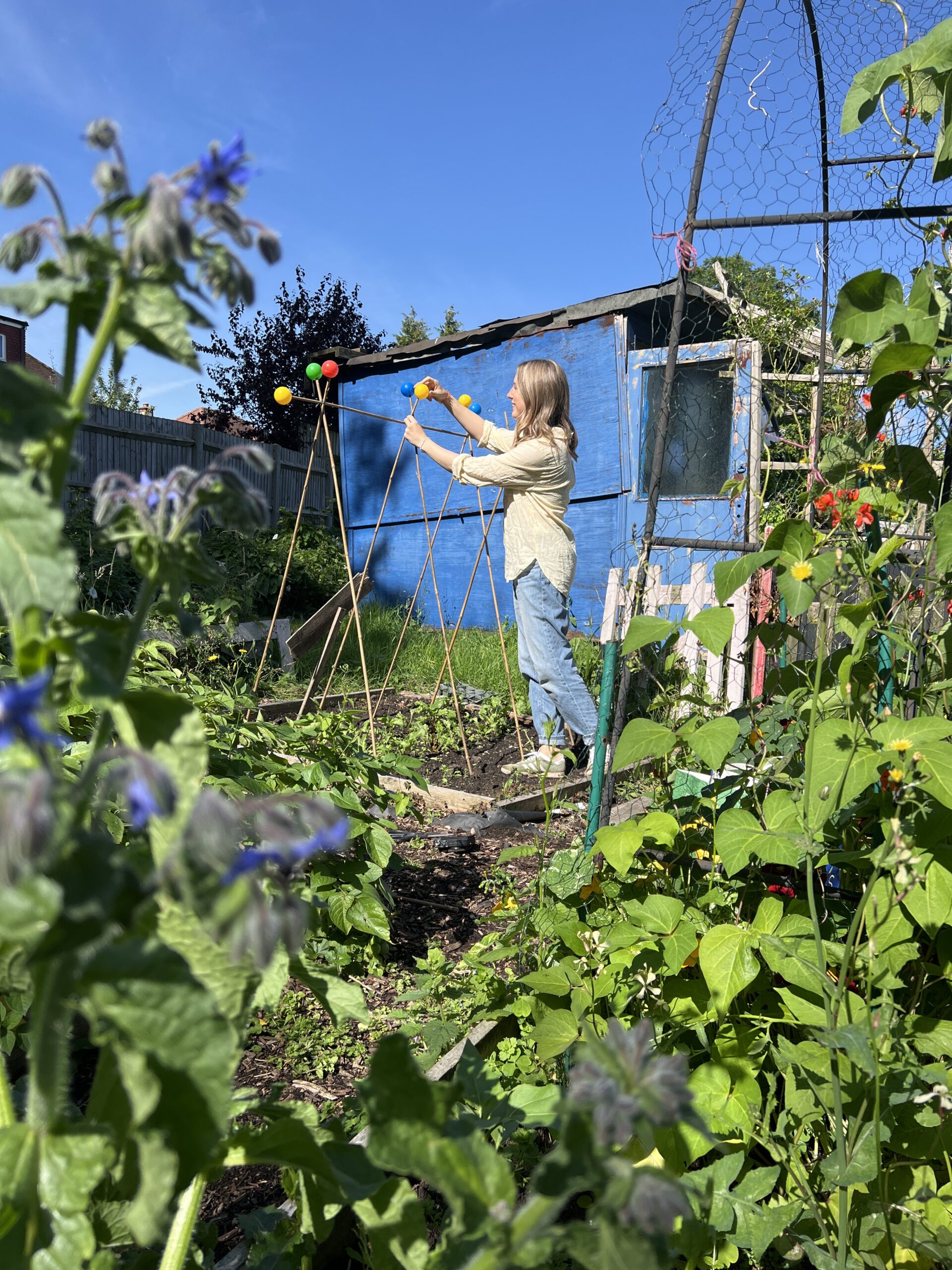
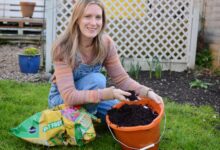






I think it really depends on which kind of plants you are growing. Some benefit or are not affected from growing in clumps (radish,spring onion) but most will suffer if they don’t have enough of their own space. As for preventing pests, this is very species specific as well. As for slugs and snails, it seems that very strong plants are less affected and also if you can provide fewer hiding places for them during the day such as under rocks and piles of leaves. Keep all the beds very clear and also don’t let the leaves be on the ground. In the summer i also only water in the morning so that the surface dries out by the time it is evening and they come out. I wonder about sacrificial crops because although you might spread the problem out a bit to begin with and see some benefit, you’re also going to provide a great place for the pests to multiply and eventually they will spread onto the crops you don’t want them on.
Really interesting points John and lots for me to think about! I’ve only just started the idea of sacrificial crops and so far I’m seeing the benefits. But I will wait and see how this plays out in time and whether the problem does just move onto my other crops too!